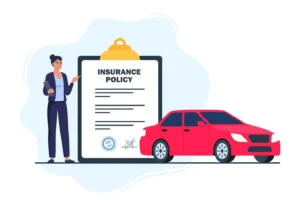Auto Insurance Claims: What to Do After an Accident

Auto accidents can be stressful and overwhelming, but knowing how to navigate the process of filing an auto insurance claim can make a significant difference in your experience. In this comprehensive guide, we will provide you with a detailed explanation of the steps to take after an accident, including how to document the incident and work effectively with your insurer. Being prepared can help streamline the claims process and ensure you receive the support you need.
Contents
1. Introduction
No one anticipates being involved in an auto accident, but accidents can happen to even the most cautious drivers. Knowing what to do after an accident is essential, especially when it comes to filing an auto insurance claim. This guide aims to provide you with a step-by-step approach to help you navigate the process smoothly.
2. Prioritize Safety
Before addressing any paperwork or insurance matters, prioritize safety. Ensure that everyone involved in the accident is safe and, if necessary, seek medical attention. If your vehicle is in a dangerous location, consider moving it to the side of the road or a safer spot if it’s safe to do so.
3. Gather Information
Collecting information at the scene of the accident is crucial for filing an insurance claim accurately.
3.1. Exchange Information
Exchange the following information with the other parties involved:
- Names and contact information.
- Insurance company names and policy numbers.
- Vehicle information (make, model, license plate numbers).
- Driver’s license numbers.
3.2. Document the Scene
Use your smartphone or a camera to document the accident scene. Take photos of:
- Vehicle damage.
- The positioning of vehicles.
- Traffic signs and signals.
- Skid marks or debris.
- Injuries, if visible.
3.3. Contact the Authorities
In many cases, it’s essential to contact the police to report the accident. They will create an accident report, which can be valuable when filing your insurance claim.
4. Notify Your Insurance Company
As soon as possible, notify your insurance company about the accident. Many insurance providers have a 24/7 claims hotline for reporting accidents. When contacting your insurer, be prepared to provide the following information:
- Your policy number.
- Details about the accident.
- Information about the other parties involved.
Promptly reporting the accident is essential, as delays can sometimes affect the claims process.
5. Filing the Claim
After notifying your insurance company, you’ll begin the process of filing the claim.
5.1. Provide Details
When speaking with your insurer, be prepared to provide detailed information about the accident. This may include:
- Date, time, and location of the accident.
- A description of how the accident happened.
- Information about injuries and property damage.
5.2. Submitting Documents
Your insurer will likely ask you to submit documents to support your claim. These may include:
- Accident report from the police.
- Photos of the accident scene and vehicle damage.
- Medical reports or bills related to injuries.
- Repair estimates.
5.3. Obtain Repair Estimates
If your vehicle is damaged, obtain repair estimates from authorized repair shops. Your insurer may recommend specific shops or provide a list of approved ones.
6. The Claims Process
Once your claim is filed, it will go through several stages:
6.1. Investigation
Your insurance company will investigate the accident and review the information provided. They may also contact the other parties involved and assess the extent of the damages.
6.2. Determining Fault
Based on their investigation, your insurer will determine fault for the accident. This determination can affect how the claim is processed and who is responsible for covering the damages.
6.3. Settlement
After determining fault, your insurance company will work to settle the claim. This may involve negotiations with other insurers or parties involved. Once a settlement is reached, your insurer will provide compensation for the damages.
7. Repairing Your Vehicle
If your vehicle is damaged in the accident, your insurer will guide you through the repair process. You may need to choose an approved repair shop, and the insurer will coordinate payments with the shop directly.
8. Rental Car Coverage
If your policy includes rental car coverage, your insurer may provide you with a rental vehicle while your car is being repaired.
9. Staying Informed
Throughout the claims process, stay in communication with your insurance company. They will keep you informed about the progress of your claim and any additional steps you need to take.
10. Conclusion
Filing an auto insurance claim after an accident may seem overwhelming, but following these steps can help you navigate the process with confidence. Remember that your insurance company is there to support you through this challenging time. By prioritizing safety, gathering necessary information, and promptly notifying your insurer, you can ensure a smoother claims process and a quicker resolution to your accident-related issues.









